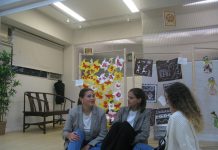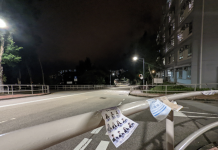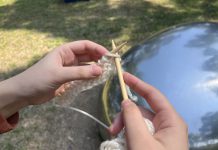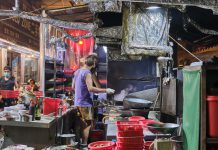Although he travels around the world for his job, he describes it as “passive” since he mostly waits for orders. There are exceptions. Earlier this year, Yu volunteered to travel to Japan to cover the aftermath of the earthquake and tsunami.
He knew what a big story it was, involving a natural disaster and man-made catastrophe in the form of the damaged nuclear power plant. As he recalls the trip, he also mentions he is particularly fond of Japanese culture.
In the four weeks that Yu was in Japan covering the earthquake, he took a large number of photos with his iPhone. Yu is excited about these photographs taken on his phone. “They are square and there is less emphasis on technique and composition. The content becomes more direct.”
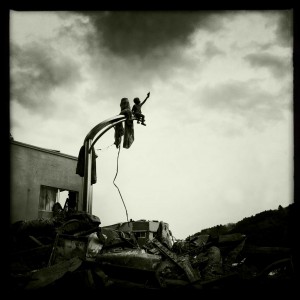
“These photos are more than just about the earthquake in Japan, they are about more universal human issues like catastrophe and loss, about the nuclear issue.”
He is currently thinking about what to do with these photographs and hopes they will ultimately be exhibited in Japan.
Photography is not just a job or a profession for Yu, it is his biggest interest and his passion. He likes to take pictures in his spare time and has exhibited photos on a variety of themes from the Shek Kip Mei housing estate to Hong Kong’s vanishing coastline.
He says he prefers not to use the usual photo essay format which only describes the causes and effects of an event. “Photo essays are descriptive but not a kind of expression.” says Yu. “Photo essays are similar to news reports which are relatively objective. Photography should be like literature, conveying thoughts and feelings.”
Despite this, Yu thinks that news photo should not be purely artistic. He takes both objective and artistic news photo.
He believes photojournalists should put communication above all else as members of the public might not understand what is happening if a news photo is not objective. The subject of the news must be shown clearly. Although he admits it is old-fashioned, he still insists on trying to take a “best photo” every time, a shot that decisively captures the essence of the story.
“A good news photo should include human core values like the humanity of the subject and emotions. It can touch people all around the world.” For Yu, a photo should resonate with the beholder at first glance, although captions are also important in helping readers to understand the message behind the image.












